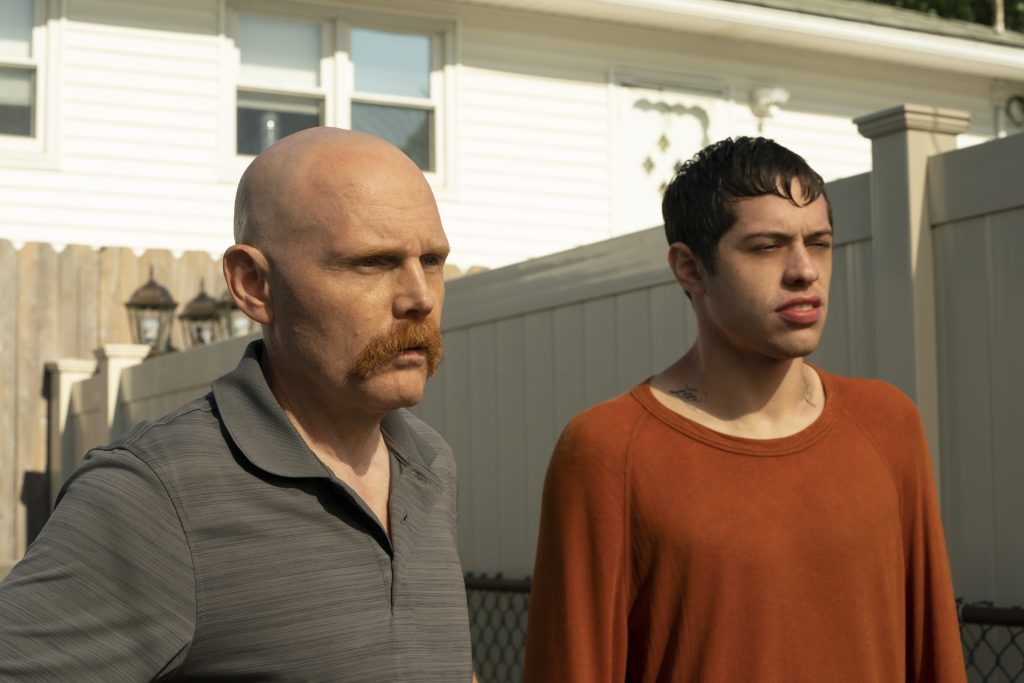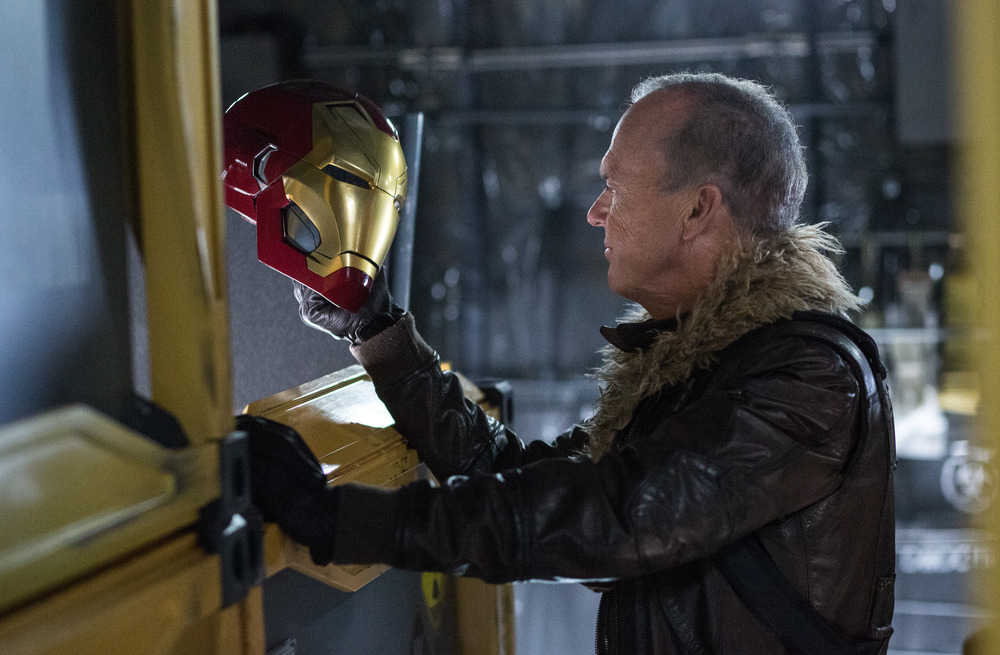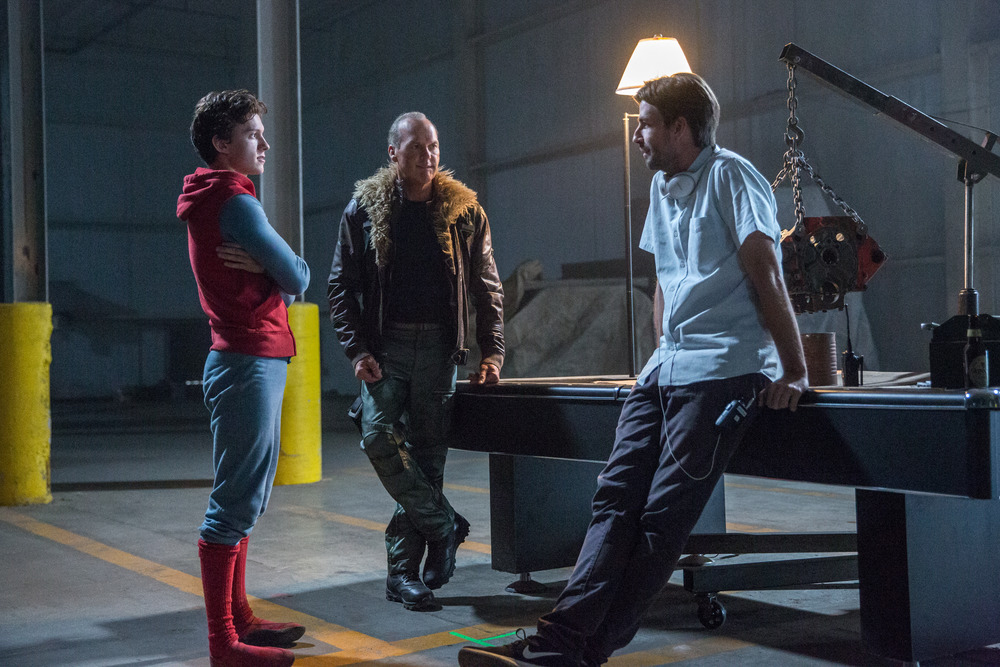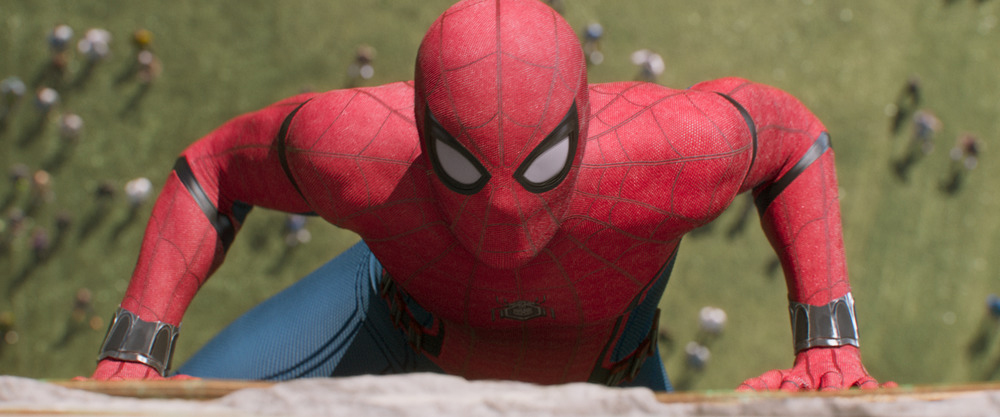October 20, 2023
by Carla Hay

Directed by Rebecca Miller
Culture Representation: Taking place in New York City and briefly in Delaware, the comedy/drama film “She Came to Me” features a predominantly white cast of characters (with a few African Americans) portraying the working-class and middle-class.
Culture Clash: An opera composer, who is in a stale marriage to his psychiatrist, overcomes his writer’s block after he has a sexual encounter with a female tugboat captain, who has a history of stalking, while his 18-year-old stepson has relationship problems of his own that involve an accusation of statutory rape.
Culture Audience: “She Came to Me” will appeal primarily to people who are fans of the movie’s headliners and movies that try to be “slice of life” but aren’t very realistic.
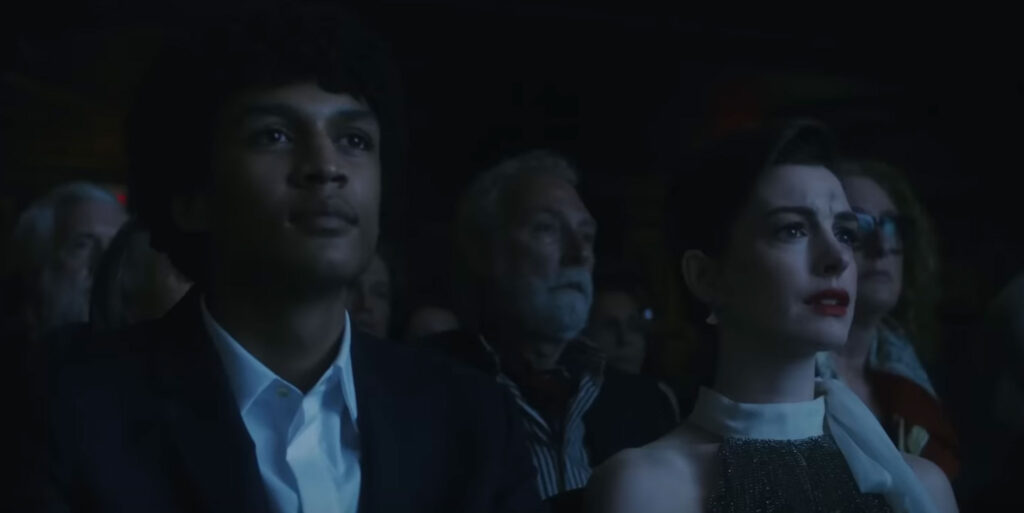
“She Came to Me” is a meandering, off-balance dumpster of half-baked ideas. It fails to have much compelling drama and isn’t very funny in attempts at absurdist comedy. Everything really falls apart in the last half-hour that is annoying nonsense. The movie’s talented cast members mostly flounder around in characters who often don’t have believable chemistry with each other in relationships where they’re supposed to have believable chemistry.
Written and directed by Rebecca Miller, “She Came to Me” had its world premiere at the 2023 Berlin International Film Festival. The fact that this subpar movie was at such a prestigious film festival is an example of how family connections (Miller is married to Oscar-winning actor Daniel Day-Lewis) and having famous cast members can give certain filmmakers an advantage to get their movies into a major film festival. The Berlin International Film Festival tends to choose very artsy movies. There’s nothing artsy about “She Came to Me.”
“She Came to Me” is a clumsy back-and-forth stumble between two storylines that are shoved together in the last 20 minutes in a way that looks completely fake and unearned. It’s as if Miller couldn’t think of a good way to end the movie and came up with something that panders to the lowest-common, silly denominator in the last third of the film, when the tone for the previous two-thirds of the film aimed to have more of a cutting-edge comedic tone.
In “She Came to Me” (which takes place mostly in New York City and briefly in Delaware), the two storylines that are awkwardly placed are about the love life problems of a father and his 18-year-old stepson. The marketing of “She Came to Me” misleadingly makes it look like the father’s storyline is the only focus of the movie, but the son’s storyline gets nearly as much screen time. The teenage romance that takes up so much time in “She Came to Me” is not hinted at in the movie’s poster or trailer.
In the beginning of “She Came to Me,” viewers are introduced to New York City-based opera composer Steven Lauddem (played by Peter Dinklage) and his psychiatrist wife Patricia Jessup-Lauddem (played by Anne Hathaway), who are experiencing a rough patch in their marriage. Steven is mopey and anxious because he has writer’s block and is expected to meet a deadline in a few weeks to complete the first draft of his next opera.
Patricia has her own issues: She seems to be obsessive-compulsive about keeping everything neat and clean. Patricia has relegated her sex life with Steven to be “by appointment only.” She is also conflicted about her interfaith background (her mother was Catholic; her father was Jewish), but Patricia is currently a practicing Catholic.
The first scene in the movie shows Steven and Patricia at a house party. Some of Steven’s colleagues in the opera industry are there. Steven is very uncomfortable and reluctant to be at the party, because he doesn’t want to have to answer questions about his next opera, which he secretly hasn’t even begun to write. Only a few people, such as Patricia, know that Steven has writer’s block. Patricia thinks this party will be a good networking opportunity for Steven.
One of the people at the party is Duftin Haverford (played by Gregg Edelman), a high-ranking official at an opera company. Duftin inevitably asks Steven when Steven’s next opera will be completed. Steven pretends that he can meet Duftin’s deadline for a first draft in two weeks. It’s a deadline that Steven is dreading.
As Duftin walks away from Steven and Patricia, Duftin tells his party companion that Steven had a nervous breakdown five years ago and went into a deep depression. Patricia was Steven’s therapist, but at some point, their relationship obviously became more than a doctor-patient relationship, and they got married. Duftin quips, “If she were my therapist, I’d marry her too.” Little does Duftin know how stagnant this marriage has become.
Meanwhile, Patricia’s 18-year-old son from her first marriage is Julian Jessup (played by Evan Ellison), who is having a happy romance with his 16-year-old girlfriend Tereza Szyskowski (played by Harlow Jane) while they are students at the same high school. Julian and Tereza, who have no siblings, are good students in school and spend as much time as they can together. Tereza and Julian are lab partners in a science class, and they both have aspirations to become “futurist” engineers. It’s mentioned later in the movie that Patricia’s first husband (Julian’s father) left her and Julian and then died after the divorce.
Julian and Tereza are very close, but apparently not close enough for Tereza to introduce Julian to her parents or invite him into her home. Tereza’s mother Magdalena Szymkowski (played by Joanna Kulig) is a Polish immigrant who works as a house cleaner. Tereza and Magdalena have a tension-filled relationship that is typical of what can happen between a parent and a teenage child: The teenager wants more freedom than the parent is willing to give.
Magdalena is protective of Tereza because she doesn’t want Tereza to make wrong decisions when it comes to love and romance. The movie doesn’t go into too many details of what happened to Tereza’s biological father. However, Magdalena says enough in conversations for viewers to know that it was a bad marriage, where Magdalena felt disrespected and stifled, so she has vowed to never be financially dependent on a man again. She’s teaching Tereza to have the same outlook on life.
Ironically, Magdalena is now with a live-in partner who is very controlling. Magdalena’s current beau is Trey Ruffa (played by Brian d’Arcy James), who has adopted Tereza, even though he and Magdalena aren’t married. Trey works as a courtroom stenographer. Trey likes to think that even though he didn’t go to college, he knows enough about the law that he could be a prosecutor if he had the credentials for it.
Trey is a very strict parent, while Magdalena is willing to have more flexibility in parenting of Tereza. There’s a useless tangent in the movie about Trey being a Civil War re-enactment enthusiast. He brings an uninterested Magdalena and Tereza to a Civil War re-enactment event where participants have to dress in Civil War-era costumes.
There are other reasons (that are at first unspoken, but come out later in the movie) to explain why Tereza doesn’t feel comfortable bringing Julian to her home to introduce him to her parents. There are differences between Julian and Tereza when it comes to their ages (and what they can legally do because of their ages), social classes and races. (Julian is black, and Tereza is white.) If there’s a racist in Tereza’s family, it’s easy to guess who it is. Tereza is reluctant to show Julian what her family is like, but she is welcome in Julian’s home, where Tereza has a very good rapport with Patricia.
One day, while Steven is wallowing in self-pity over his writer’s block, he decides to walk his French bulldog Levi and go to a local bar at around 11 a.m. to have a drink or two. At the bar, he meets an unusual stranger: a tugboat captain named Katrina Trento (played by Marisa Tomei), who lives in Baton Rouge, Louisiana, but is passing through New York City for work-related reasons. Steven and Katrina have a conversation where they tell each other a little bit about their lives. He doesn’t tell Katrina right away that he’s married.
Katrina mentions that her tugboat business has been in her family for generations. She makes it obvious that she’s attracted to Steven and invites him to go on her tugboat nearby. Steven is curious but a little nervous. On the tugboat, Katrina reveals more about herself. She confesses, “I’m addicted to romance.” She also says she’s been in court-ordered rehab, because she has a history of stalking love interests.
Most people with common sense would steer clear of someone with these problems, but Steven seems to crave the attention that Katrina is giving him at that moment. And so, when she starts taking off her baggy work clothes to reveal that she’s got slinky lingerie underneath, it comes as no surprise that Katrina seduces Steven. None of this is spoiler information, since this plot development (and many others) are revealed in the trailer for “She Came to Me.”
At the end of this sexual encounter, Katrina starts babbling to Steven as if she expects them to be in a relationship. Steven tactfully tells Katrina that what they had is a one-time encounter, and he doesn’t want to see her again. He also urges her to get psychiatric help for her obsessiveness. He then quickly leaves the tugboat.
Steven’s tryst with Katrina (and his accidental fall in the dock’s water when he leaves the tugboat) jolt him out of his writer’s block and inspire him to write the opera “She Came to Me,” which is about an attractive female tugboat captain who seduces men and kills them. The opera is a hit. Katrina eventually finds out that she’s the inspiration for the opera when she goes to a performance. After the show, Katrina tells Steven (who is surprised to see Katrina) that she has permanently moved to New York City. (This plot development is also revealed in the movie’s trailer.)
All of this sounds like more than enough for two movies, which is why “She Came to Me” is often unfocused and unwieldly. The movie’s opera scenes are embarrassingly horrible. In no way, shape or form would this amateurish opera ever realistically be on any legitimate, major opera stage in New York City. There are some high school productions in real life that look better than the opera scenes in “She Came to Me.”
And although the “love triangle” between Steven, Patricia and Katrina is a major part of the movie, the three middle-aged adults in this situation are a lot more foolish and less mature than the two teenagers (Julian and Tereza), who go through their own personal drama. The storyline involving Steven, Patricia and Katrina gets so unrealistic, it’s almost like it belongs in a completely separate movie. “She Came to Me” starts off with a somewhat offbeat comedic tone, then makes an abrupt turn into a melodrama, and then sinks into a cesspool of ridiculous schmaltz.
The cast members are not to blame for why this disappointing movie has such an unfortunate identity crisis. Dinklage, Ellison, Jane and Kulig give solid performances. Hathaway and Tomei (the two Oscar winners in the movie’s principal cast) make an effort to bring nuance to their roles, but the characters of Patricia and Katrina are such cringeworthy clichés (the sexually repressed wife and the wacky, uninhibited mistress), these stereotypes are borderline misogynistic. Toward the end of the movie, certain characters make decisions that are nonsensical and look very inauthentic. Ultimately, viewers are more likely to feel disconnected from most of the characters in this dreadful dud of a movie, instead of feeling connected and invested in what will happen next.
Vertical released “She Came to Me” in select U.S. cinemas on October 6, 2023.




